
Jekyll Island, Georgia was established as part of the Golden Isles chain of barrier islands in 1947.
©Norm Lane/Shutterstock.com
Jekyll Island is one of the Golden Isles of Georgia barrier islands. Also, it is home to a large array of wildlife, large and small alike. With warm, coastal temperatures and a very mild winter, local species are available for sightings, as well as those species that travel south for the winter months.
Catch glimpses of ocean creatures and land huggers, birds of the air, and birds of the sea. This coastal island offers nearly as many animals as it does locations to view them all. Whether in the car, on a boat, on a bike, or on your feet, there will always be some form of wildlife within viewing distance.
Here’s a list of the 12 places to view wildlife on the island.
1. Jekyll Island Causeway

Black-bellied plovers are prominent along the causeway and throughout Jekyll Island.
©Elliotte Rusty Harold/Shutterstock.com
Gaining entrance to the island via the causeway provides beautiful views with lots of opportunities for wildlife spotting. Just glancing out a window can give a glimpse of some animals. For better chances at bird sightings, there are two different stops along the causeway that offer optimum viewing opportunities. One of the stops houses a two-story wildlife viewing platform that overlooks the marsh. At certain times each day, there can be sightings of black-bellied plovers, whimbrels, and avocets. Otters are occasionally spotted here as well. The old bridge deck is the second location and during low tide, it offers panoramic views of the tidal marsh flats.
The most commonly spotted birds
include the bald eagle, northern harrier, osprey, pelican, white ibis, and wood stork. Additionally, the clapper rail, roseate spoonbill, red knot, belted kingfisher, and black-necked stilt are prominent throughout the island.
There are four species of rabbits living in Georgia, the eastern cottontail, the swamp rabbit, the Appalachian cottontail, and the marsh rabbit. Specifically, on Jekyll Island, there is only the marsh rabbit.
They are plentiful though, as during the springtime, it’s quite possible to see more than 100 of the rabbits along the island’s causeway. While the rabbits mate year-round, they are most active in the spring, causing them to be more visible than during other seasons.
2. Georgia Sea Turtle Center

Georgia
Sea Turtle
Center is the state’s only rescue and rehabilitation center.
©ValeriiaES/Shutterstock.com
Serving as both a sea turtle education and rehabilitation center, this center provides guests with year-round indoor and outdoor programs. Guests can learn about sea turtles while watching rehab work at the moment.
Since 2007, the center has provided treatment to hundreds of injured and sick turtles, with the majority being released back into the ocean.
Getting In
Tickets are available online, and it is strongly recommended that tickets be purchased in advance of arrival. The center currently operates on a timed entry admission, and buying tickets online ahead of time will help ensure entrance at your specified date and time. Furthermore, the center is open daily, from 9 a.m. to 5 p.m.
Behind the Scenes
Participate in the 45-minute, semi-private guided tour of the staff-only areas and meet the patients hidden from the public areas. View the hospital and food prep areas to learn about the best veterinary and husbandry processes. The tour will kick off with an intro to the center. Guests on this tour must be at least 10 years old and those under 15 must be with an adult.
The price of admission to the tour also includes general admission. Select a date at their website; tours are available select dates on Wednesdays, Fridays, Saturdays, and Sundays, at 3 pm.
3. Horton Pond at Jekyll Island

Horton Pond on Jekyll Island is the best place to see gators up close.
©Kristi Blokhin/Shutterstock.com
Jekyll Island’s Horton Pond is a great place to view wildlife while enjoying the beach atmosphere. In this secluded spot, there are plenty of chances to catch a glimpse of animals. Birds, alligators, turtles, and fish can be seen from the wheelchair-accessible viewing platforms.
An anchored floating platform within the pond attracts turtles, birds, and gators, and allows clear views of guests at the viewing platforms.
Additionally, a small island provides a habitat that is designed to attract nesting wading birds. This is a great location to spot songbirds as well.
There is also a large pond with a nature trail that wraps around the diameter. The Tupelo Trail is a 0.7-mile trail that provides scenic views of the pond as well as the surrounding woods. Beginning near the observation deck, the path passes through a variety of the island’s maritime plant communities.
Plaques have been posted along the trail that display plant descriptions. The plaques also include facts about native plants, such as the Tupelo Trees, Resurrection Ferns, and a variety of blueberries. The trail will lead through multiple types of habitats, providing a look into all the natural beauty of Jekyll Island.
4. St. Andrew’s Beach Park
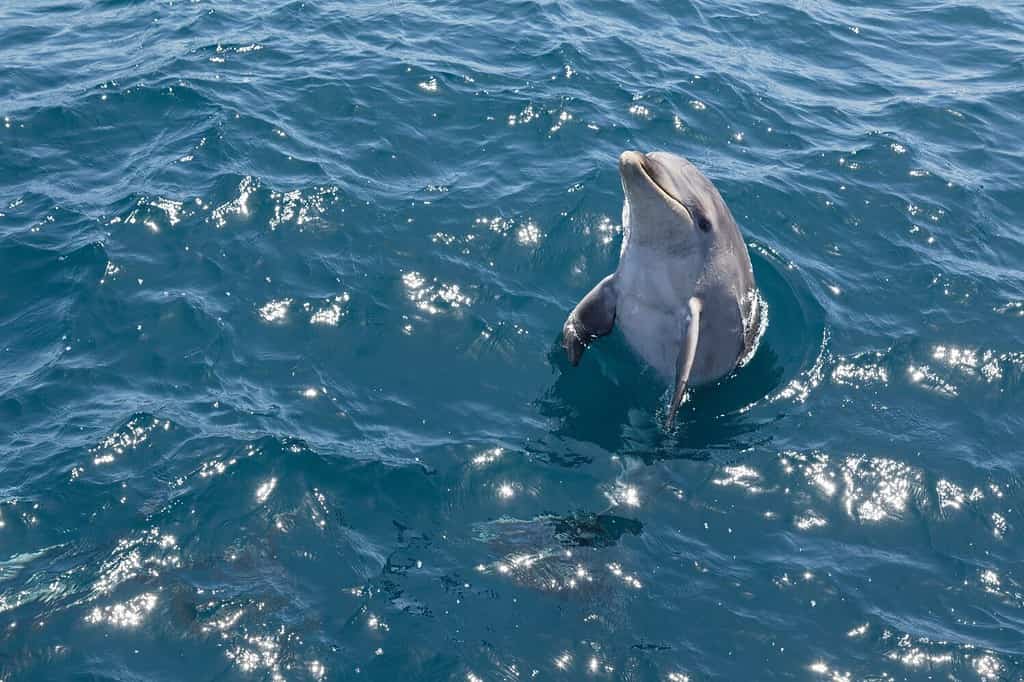
St. Andrew’s Beach Park is Jekyll Island’s most likely place to catch views of these playful mammals.
©Paleokastritsa/Shutterstock.com
For those wanting to see bottle-nosed dolphins, St. Andrew’s Beach Park is the primary destination. Sure, walking the beach is a great way to spot schools of dolphins, but there is also a two-story wildlife viewing platform for bird watching as well as spotting marine life.
Sure, walking the beach is a great way to spot schools of dolphins, but there is also a two-story wildlife viewing platform for bird watching as well as spotting marine life. Located a short walk from Jekyll Point, the island’s southernmost point. The pet-friendly beach offers wheelchair-accessible parking as well as accessible beach access, along with restrooms and some open-air pavilions with picnic tables.
5. Skeleton Island

Ospreys are local to Jekyll Island during all four seasons and can commonly seen from multiple locations.
©Wang LiQiang/Shutterstock.com
Located at the northern end of Jekyll Island is a mixture of beach, saltwater habitats, and forest that provide optimum wildlife viewing options. Additionally, there is an overlook for a freshwater wetland that houses black-necked stilts, teal, wood ducks, and a variety of other species.
The best birding season for gull-like birds, shorebirds, songbirds, and wading birds are listed as year-round, while the waterfowl birding season is considered winter only.
Ospreys are local throughout the year, while common and red-throated loons can be seen fishing off the beach. Warblers are most common during the fall and spring migrations, while thousands of scaup and scoters are a bit offshore during the winter months.
In addition to birds, other highlights include the raccoon, several frog species, and of course, the American alligator. Nesting sea turtles are active from May to August on the island’s beaches. Also, deer are quite common, as is the wild rabbit.
6. The 4-H Tidelands Nature Center
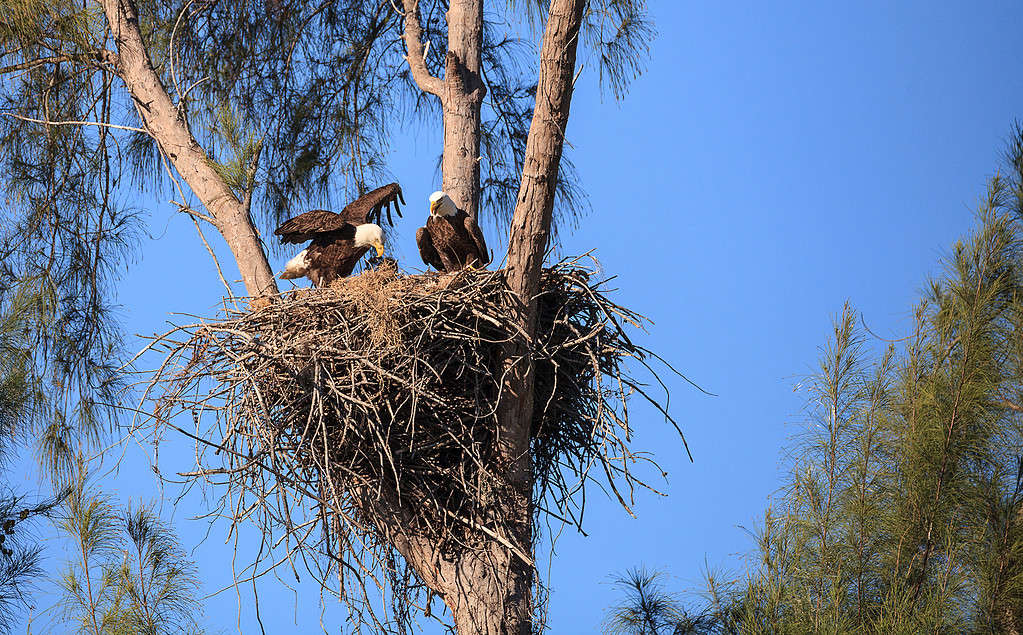
Bald Eagles can be visible while on guided nature walks offered through the 4-H Nature Center.
©iStock.com/LagunaticPhoto
This is where you can be really hands-on with your search for wildlife. There are a few different activities available at the 4-H Nature Center, with choices such as guided nature walks and ranger walks for Bald Eagle nest viewings.
Nature walks are between 1-1 ½ hours through the maritime forests, beaches, and salt marshes. Reservations are required and walks are offered from March through October. Walks are three days a week, and have this schedule:
- Mondays — North Tip and Driftwood Beach. Great for photographers, this walk begins at the marsh and ends at the famous Driftwood Beach.
- Wednesdays— South Tip and Beach Creek. This walk journeys from the maritime forest into the south-tip beach. Also included is some time at the newly added wildlife observation tower, which overlooks the Beach Creek marshes. This is a great choice for birding.
- Fridays-South — Dunes Picnic Area. This is perfect for beachcombers, as the walk follows the dune boardwalk down to the beach.
Another option is the Ranger Walks. Held on Saturdays in December-March, this is a 45–90-minute walk through one of the island’s most diverse habitats. Further, it is a great opportunity for viewing Bald Eagle nests.
For those who love to kayak, be sure to participate in the guided kayak tours. During a two-hour guided trip, the animals kayakers might see include egrets, herons, wood storks, diving pelicans, and terns, along with countless fiddler crabs. Dolphins are a common sighting, as well as the occasional manatee.
7. Jekyll Island Dolphin Tours
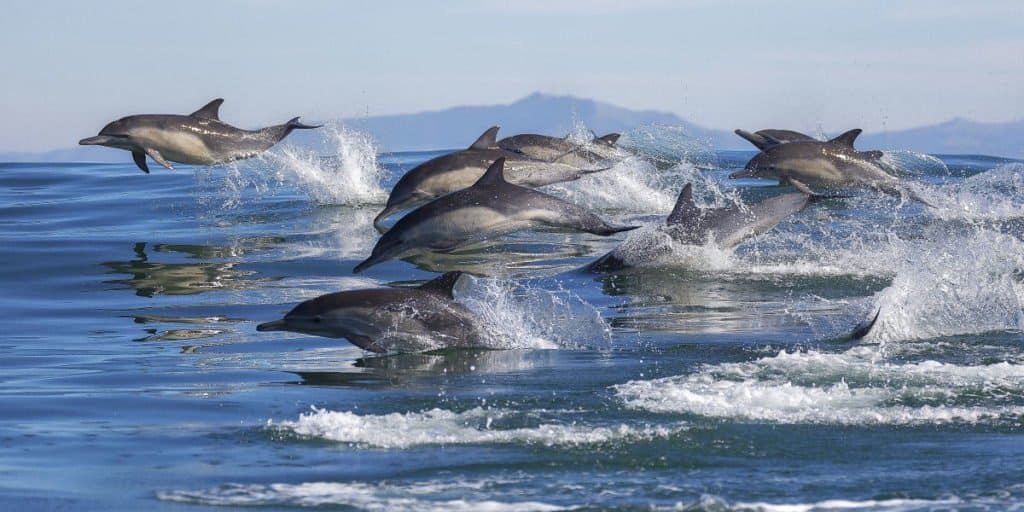
Guests on the dolphin tour can see the social creatures up close and personal.
©Chase Dekker/Shutterstock.com
This is a fun and relaxing way to ensure dolphin sightings. Cruise through coastal waterways, salt marshes, and wild beaches while watching the bottlenose dolphin. Catch them playing, cruising or feeding while learning about social abilities, feeding habits, and more.
In addition to seeing dolphins, the tour will often produce sightings of manatees, herons, sea turtles, osprey, and roseate spoonbills.
8. South Dunes Beach Park
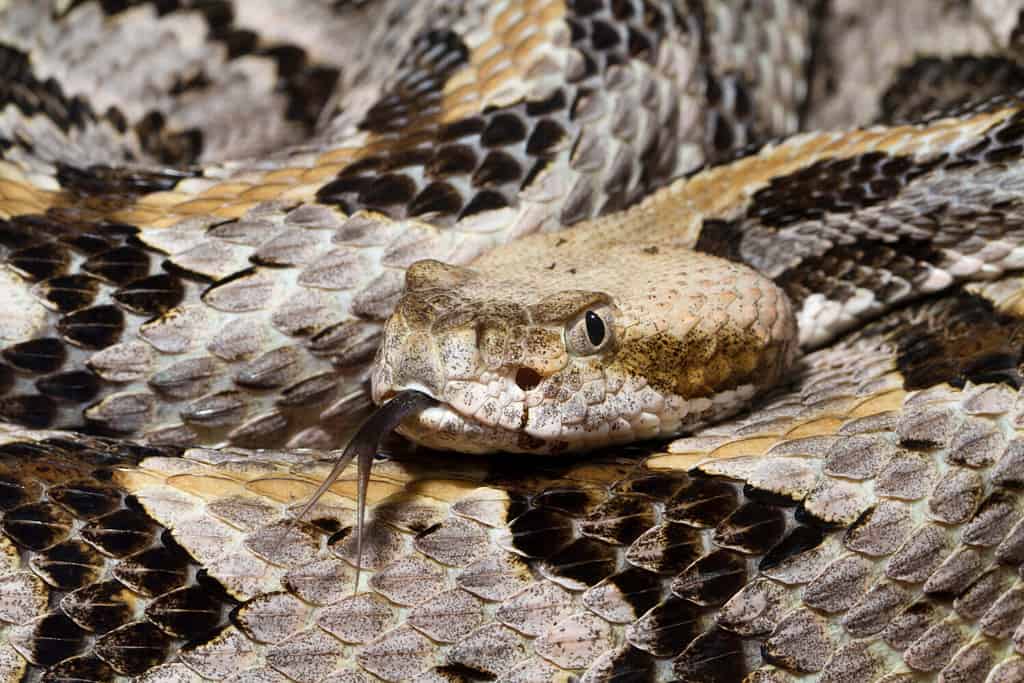
Although usually not active in areas where people are frequenting, it’s possible to come across a
rattlesnake
.
©Mark_Kostich/Shutterstock.com
This section of Jekyll Island offers an elevated boardwalk that crosses 20-foot sand dunes. There is also beach access, along with an observation deck and a freshwater pond. This is another place to possibly see a gator or two.
There are two species of venomous snakes found on the island, rattlesnakes, and cottonmouths. While they aren’t commonly found in highly trafficked areas, it is always important to be watchful of your surroundings. If you do walk up on a snake, do not approach it. Rather, move slowly away from it, giving it the space it demands.
No pets are allowed on this beach, as it is a sanctuary for nesting and resting birds.
9. South End Beach
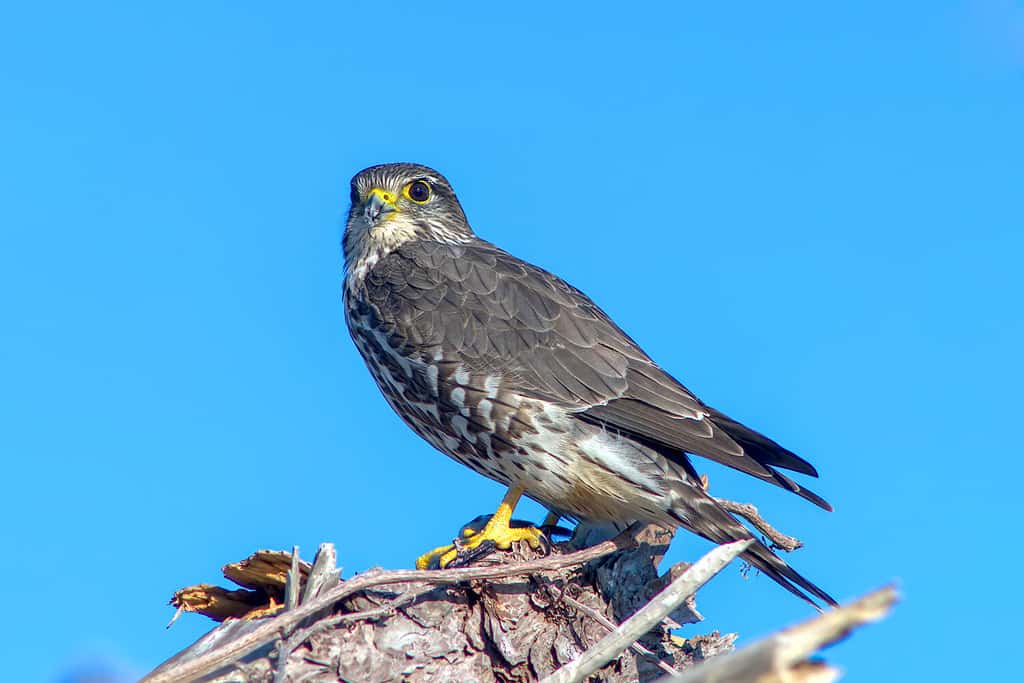
The merlin is commonly spotted on the beaches of Jekyll Island during the winter months.
©Noah Li/Shutterstock.com
Saving possibly the best for last, this is the area prime for animal sightings, especially the feathered kind.
Throughout the day, there is an amazing variety of wildlife to be seen here. Gulls and terns can be heard and seen, while the sight of a gliding brown pelican will bring a camera-worthy moment. Just offshore, it won’t be unlikely to see dolphins surfacing for air. Wilson’s plovers and American oystercatchers often nest along the beach, but both like their privacy.
During the wintertime, fowl such as the lesser scaup, ring-necked duck, and bufflehead are commonly seen around the beach. Additionally, migratory birds of prey, such as the merlin, the kestrel, and the peregrine falcon can be just as prominent.
10. Jekyll Island Pier
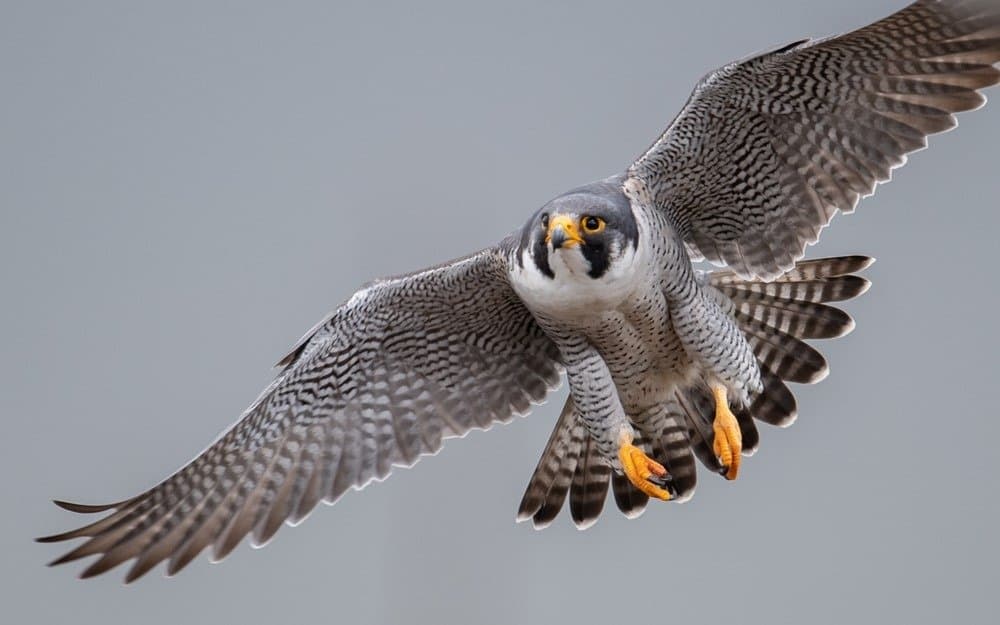
A Peregrine Falcon is most commonly sighted during the month of November on Jekyll Island, Georgia.
©Harry Collins Photography/Shutterstock.com
Situated just about ½ mile from the Tidelands Nature Center is the Jekyll Creek/Tidelands Pier. This floating dock is 120 feet long and serves up plenty of views of wildlife. Stroll casually along the pier, while searching for a dolphin cruising by, or a falcon passing by overhead. Both in the sky and in the water, animals can be seen virtually from sun up to sundown. For those interested, it’s a good place to do some fishing and crabbing.
11. Jekyll Island Trail System
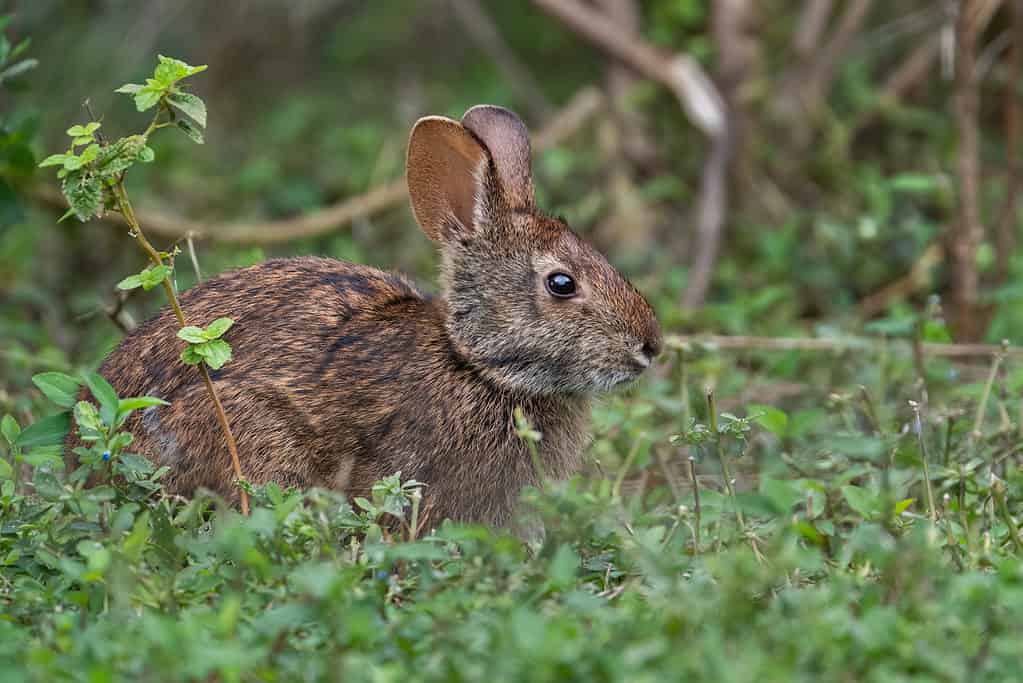
Marsh rabbits are excellent swimmers and dive into the water to escape predators.
©iStock.com/MattCuda
Throughout the island, there are 24 miles of paved trails for walking or biking. The collective trails offer a wide variety of scenery, ranging from beaches to forests. Paths lead around sand dunes, to beaches and historical sites. Each day will be different for possible wildlife sightings along this extended trail system, so be ready for anything!
Even though the marsh rabbits are plentiful throughout the island, it might be unlikely to see them out and about during bike rides. As they are easy prey to a variety of other animals, these rabbits tend to stay hidden throughout most of the day.
Stops along this trail system include Horton Pond, which is almost a sure bet of a gator sighting or two, and Driftwood Beach, which is home to raccoons, American alligators and plenty of frogs. The Jekyll Island Fishing Pier can also be reached via this biking trail system.
12. On the Open Water
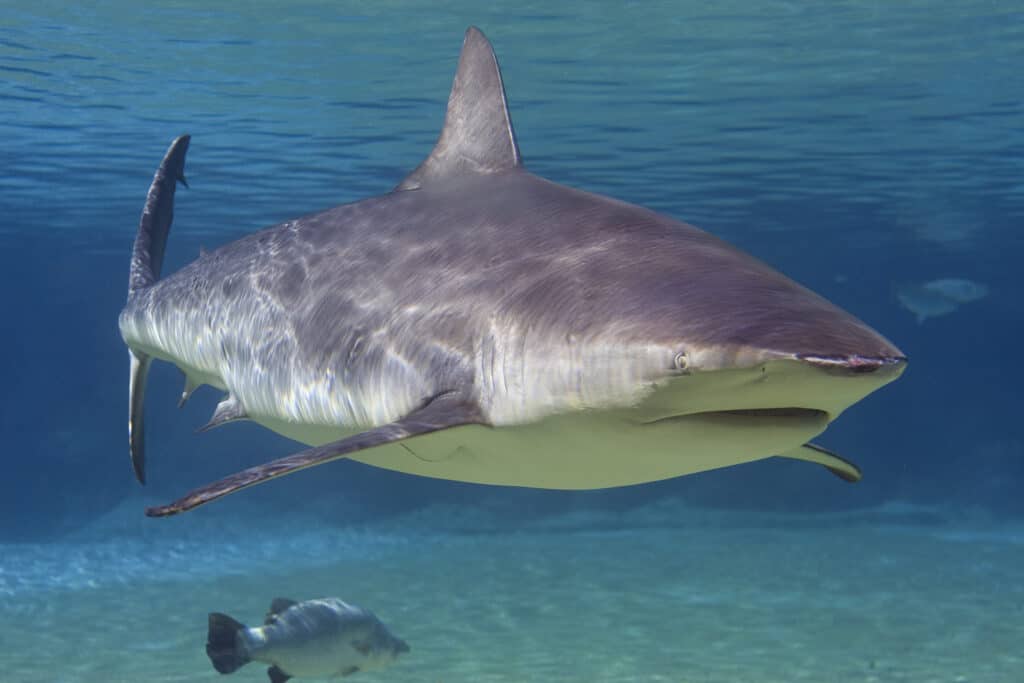
A unique fact about the
bull shark
is it can live in freshwater ponds or saltwater oceans.
©Ian Scott/Shutterstock.com
A list of wildlife within Jekyll Island wouldn’t be complete without the mention of sharks. Going miles out from the shoreline in a charter boat is a great way to see these often misunderstood creatures. Whether on a group charter boat or an individual outing on a rental boat, sightings of whales, dolphins, manatees, and sharks are possible.
There are five most common types of shark near Jekyll Island:
- Bull Sharks — thrive in freshwater bodies just as easily as in saltwater
- Sharpnose Sharks — easily visible while diving or fishing
- Lemon Sharks — one of the largest in the area, ranging from 8 to 10 feet in length
- Bonnethead Sharks– a smaller species, with a maximum length of five feet.
- Blacktip Sharks — usually found in reefs or shallow water habitats
Interestingly enough, Jekyll Island’s surrounding waters are home to some of the largest breeding grounds for sharks in the world. Most of the sharks that live around the island aren’t considered harmful to humans. While many fear shark attacks, the chances on this island are slim, as there have only been three reported bites in the last 100 years. Not a bad ratio of sharks to attacks.
Jekyll Island is a great destination for wildlife sightings and interactions in any season of the year. With warm, tropical temps nearly year-round, there really isn’t a bad time to visit. From birds to dolphins, gators to fiddleback crabs, there are plenty of wildlife options available for viewing virtually anytime.
The photo featured at the top of this post is © pniesen/iStock via Getty Images
Thank you for reading! Have some feedback for us? Contact the AZ Animals editorial team.






